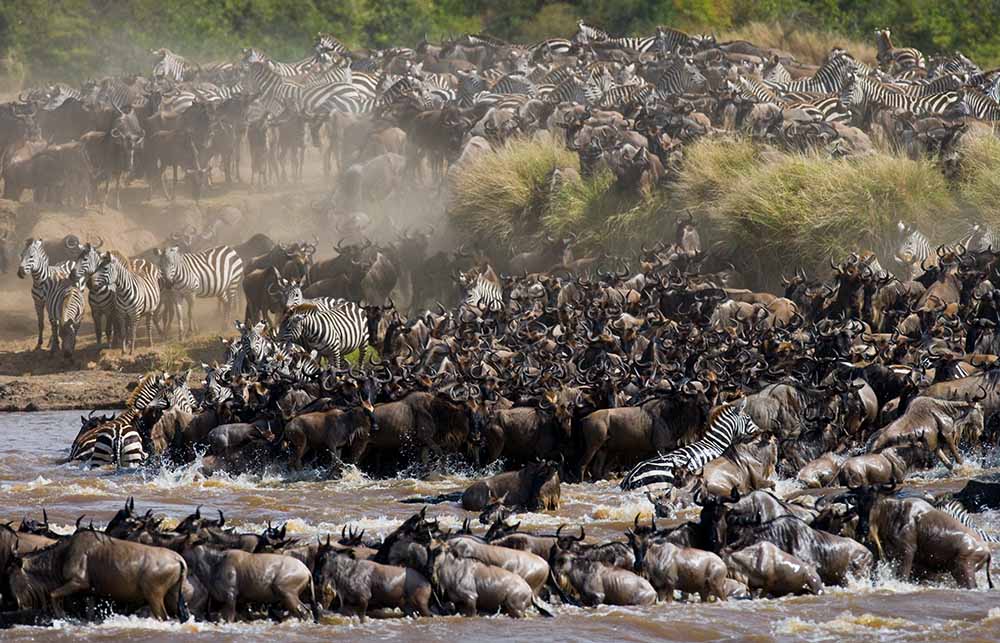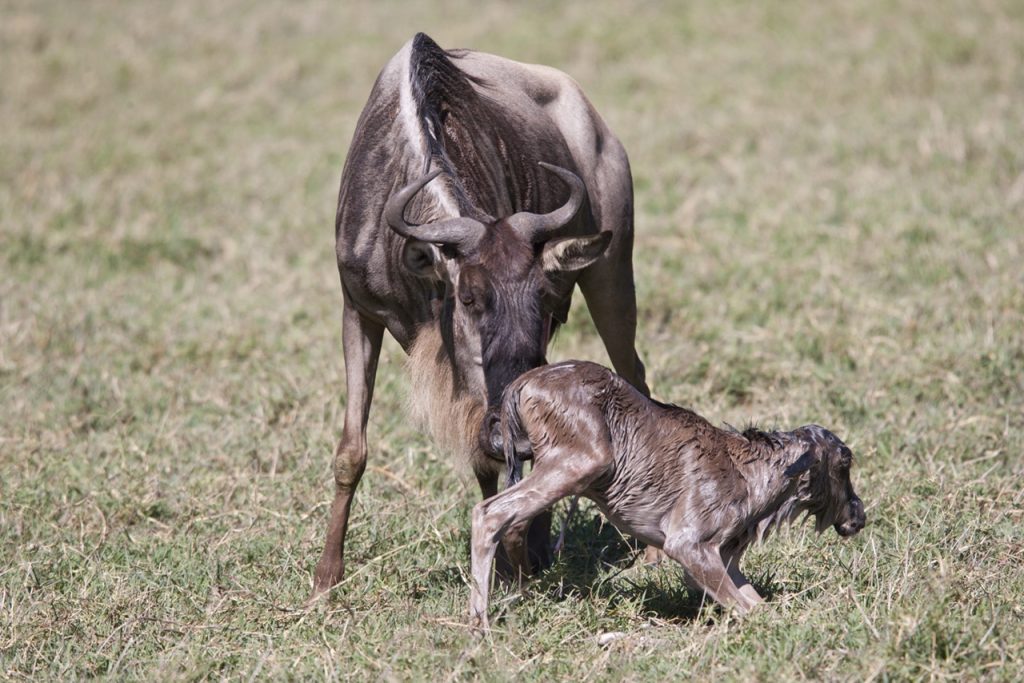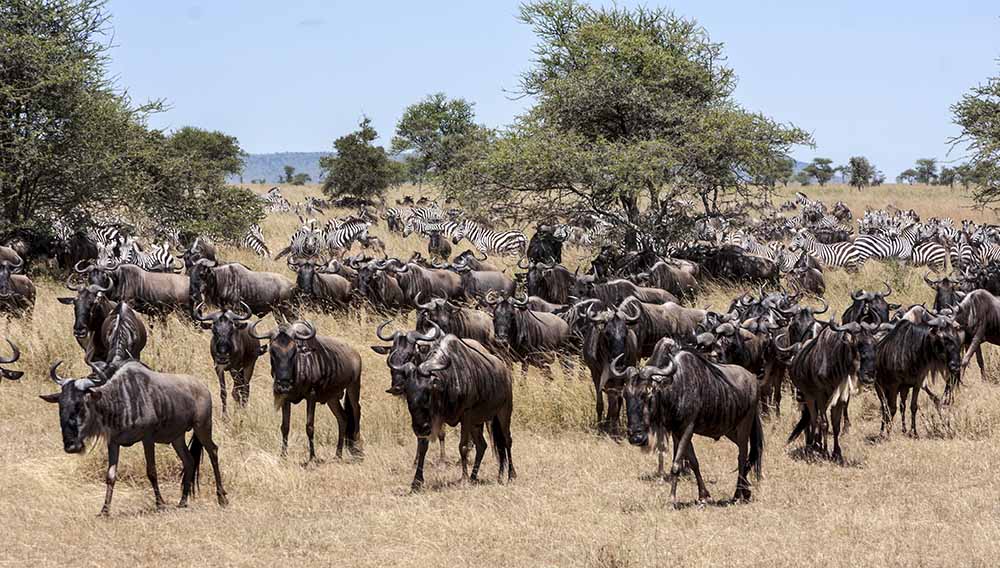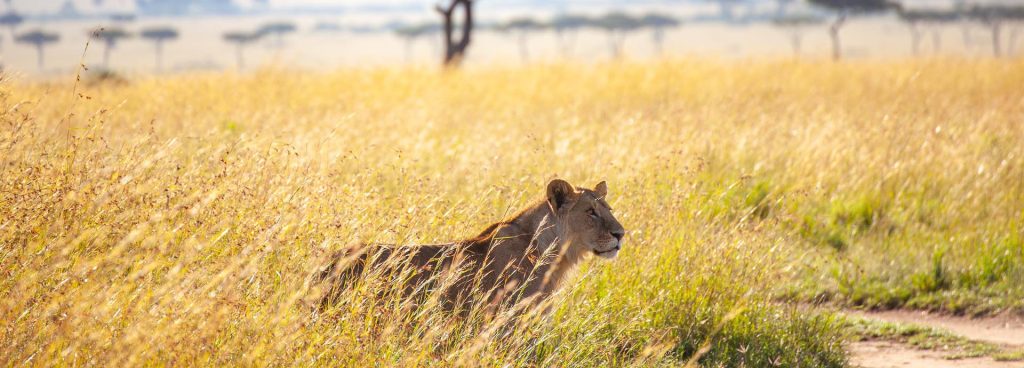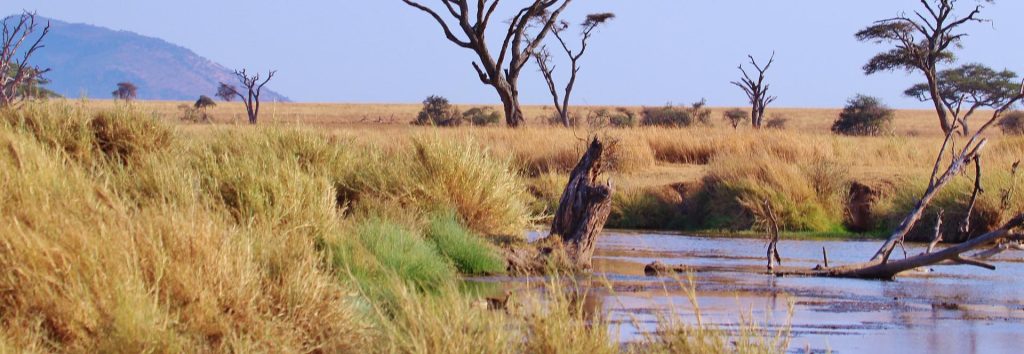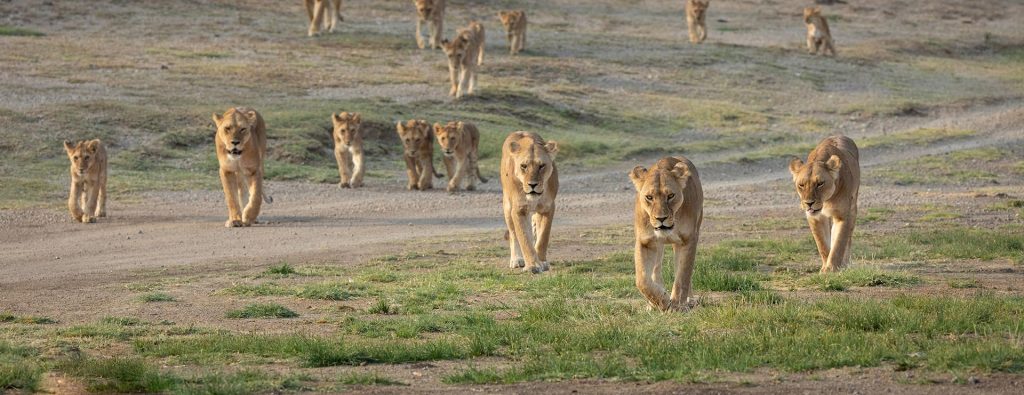Where to Stay to Witness Calving Season in Serengeti
There are several great properties in the southern Serengeti and Ndutu areas that allow you to stay close to the action. Mobile migration camps follow the herds throughout the year and position themselves close to the wildebeest during calving season. With tents of wood and canvas, Tanzania safari experience with the promise to see exceptional game and predator activity.
If you’ve ever wondered why nearly two million wildebeest put themselves through the ordeal of the migration every year, then the Serengeti calving season will show you why.
The southern plains of the Serengeti turn green after the November rains and fresh grazing is just what the wildebeest need for their energy-demanding calving season: several hundred thousand wildebeest are about to be born and it’s going to get busy.
The season is short-lived but epic in scale. In December, great waves of wildebeest come spilling out of the Masai Mara and into the southern Serengeti. The animals then fan out into adjoining areas such as the Ndutu region, Lake Masek and even the Ngorongoro Conservation Area.
It’s an amazing scene, the last great concentration of large, wildland animals in the world, and the surrounding landscape is a beautiful one: short-grassy savannah studded with rocky outcrops – koppies, the favourite haunt of the Serengeti’s leopards.
Then the calving begins. Generally starting in January, the pregnant wildebeest give birth and by February some 8 000 baby wildebeest are being born every day. The calving season carries on into March and is joined by other animals too. Tens of thousands of zebras and gazelles have accompanied the wildebeest on their trek and are taking advantage of safety in numbers to drop their young too.
Such numbers of young and inexperienced animals are of course a magnet for Africa’s predators. The big cats – lions, leopards, and cheetahs – stalk the southern Serengeti along with spotted hyenas, black-backed jackals, and African wild dogs. Your chance of seeing predator-prey interaction and indeed a kill are very high during the Serengeti calving season – great news for wildlife photographers if not for the wildebeest.
But the new-born wildebeest calves are quick to their feet: standing in minutes and able to run with the herd within three days. Most survive the onslaught of predators and by the end of March, the grasses of the southern Serengeti are exhausted. The wildebeest begin marching west in great lines, across the central Serengeti and to the muddy rivers that block their way back to the Masai Mara. Here the wildebeest pause: the notorious migration river crossings are about to begin.


